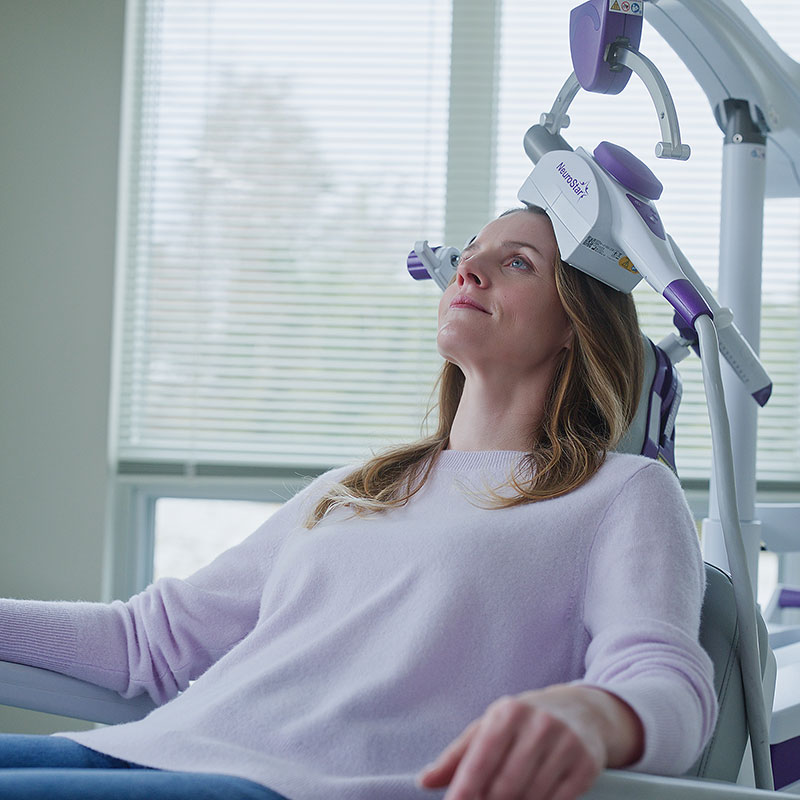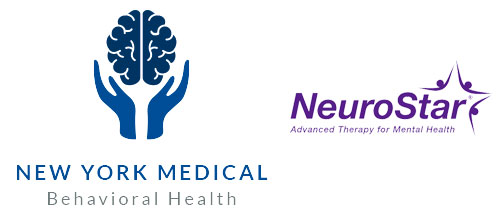About NeuroStar TMS Therapy
NeuroStar utilizes transcranial magnetic stimulation (TMS) to target specific regions of the brain that may be underactive in individuals experiencing depression. It is essential to clarify that NeuroStar is distinct from electroconvulsive therapy (ECT).
While the exact cause of depression remains unknown, the prevailing scientific theory suggests an imbalance in the brain’s neurotransmitters, the chemical messengers facilitating communication between brain cells.
What sets NeuroStar Advanced Therapy (TMS) apart? In a NeuroStar treatment session, a magnet, akin in strength to that used in a magnetic resonance imaging (MRI) machine, is employed to stimulate nerve cells in the brain region associated with mood regulation. These magnetic pulses potentially have a positive impact on neurotransmitter levels, opening the door to long-term remission.
The process of NeuroStar Advanced Therapy is straightforward:
- Treatment sessions take place in your NeuroStar doctor’s office.
- You can resume normal activities immediately.
- You remain awake during the treatment.
- The majority of health insurance plans, including Medicare and Tricare, cover the treatment.
Having delivered over 5.9 million treatments, this innovative approach to achieving remission instills newfound hope in individuals on a daily basis.

How NeuroStar TMS Therapy™ Works
Pre-Treatment: Find comfort in the treatment chair as you recline. A gentle, curved magnetic coil will be delicately positioned on your head.
During Treatment: Experience focused magnetic stimulation directly targeting specific areas of the brain with NeuroStar. You’ll notice a clicking sound and feel a tapping sensation on your head.
Post-Treatment: For NeuroStar Advanced Therapy, the duration of each treatment, as advised by your doctor, falls between 19 and 37 minutes. Immediate resumption of normal activities is encouraged. With no impact on alertness or memory, you have the flexibility to drive yourself to and from treatment sessions.
In-office sessions of NeuroStar TMS Therapy typically last 19-37 minutes and occur five days a week for approximately 7 weeks.*
TMS Testimonials
It wasn’t until the fifth week that I started to notice a difference. I wasn’t feeling “better,” but I could tell that something was different. In the sixth week, I could finally say that I was actually feeling better. It was a very slight change, but it was definitely better. As the weeks went on, things continued to improve. I was able to let go of my doubts and fears. Somewhere along the line, the headaches had stopped and the spacey feeling no longer bothered me. I was very glad that I had stuck with the treatments.
– TMS patient
Invest your time with Dr. and Mrs. Mahipal Chaudhri to see if you are qualified for this procedure. I more than understand what you are enduring NOW. I lived it for 20 years. I am free of that daily misery. I have MY life back. I owe my present and future to this wonderful couple. Just call and see for yourself. Best of luck to all who review this testimonial. There is hope…explore the TMS option available to you.
– TMS patient
Prior to my treatment, I was debilitated by my thoughts, to the point of being unable to care for my son on my own. I dreaded each day and the challenges my thoughts presented. Treatment allowed me to live my life again, and I am forever grateful to Dr. Chaudhri and Anu for helping me to achieve a greater sense of clarity and purpose. The procedures were relaxing and effective. I would recommend TMS to anyone who is struggling with depression or OCD!
– TMS patient
TMS Clinical Trials & Academic Studies
-
Carpenter LL, et al. (2012). Transcranial Magnetic Stimulation (TMS) for Major Depression: A Multisite, Naturalistic, Observational Study of Acute Treatment Outcomes in Clinical Practice. Depression and Anxiety, 29(7):587-596. www.ncbi.nlm.nih.gov/pubmed/22689344
-
George MS, et al. (2010). Daily Left Prefrontal Transcranial Magnetic Stimulation Therapy for Major Depressive Disorder: A Sham-Controlled Randomized Trial. Arch Gen Psychiatry, 67(5):507-516. www.ncbi.nlm.nih.gov/pubmed/20439832
- Dunner DL, et al. (2014). A Multisite, Naturalistic, Observational Study of Transcranial Magnetic Stimulation (TMS) for Patients with Pharmacoresistant Major Depressive Disorder: Durability of Benefit Over a 1-Year Follow-Up Period. J Clin Psychiatry. 75(12):1394-1401. www.ncbi.nlm.nih.gov/pubmed/25271871
- 4. O’Reardon JP, et al. (2007). Efficacy and Safety of Transcranial Magnetic Stimulation in the Acute Treatment of Major Depression: A Multisite Randomized Controlled Trial. Biol Psychiatry, 62(11):1208-1216. www.ncbi.nlm.nih.gov/pubmed/17573044
